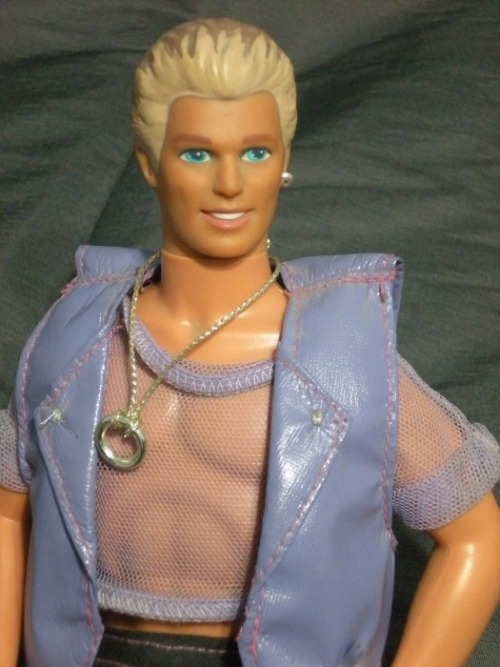I’m Bisexual And Stupid. That’s All I Am. God Looked At My Shitty Tiny Frame And Said, “you’re
i’m bisexual and stupid. that’s all i am. god looked at my shitty tiny frame and said, “you’re going to be a little bisexual moron” then released me into the world.
More Posts from Echozeta and Others

“It’s just so cool that [five] women were the best people to call.” - team member Emma Liu.

lesbians in space
Ok but as a dysphoric trans man the whole ‘you need dysphoria to be trans’ actually baffles me because even tho I’ve always has crippling dysphoria, it didn’t actually help me figure out my gender at all. I usually dismissed my dysphoria as ‘internalized misogyny’ or just not being feminine enough, which actually just caused me worse dysphoria.
You know what made me figure out that I’m trans though? Gender euphoria. The minute I got called a ‘sir’ is the moment that I realized, “shit this feels right.” And at that point I realized that I could no longer deny the fact that I’m not a woman and that I couldn’t keep living as one.
Here’s a hot take: maybe being trans isn’t so much about how uncomfortable you can be in your AGAB, but rather how much more comfortable you can be.


ok this is “earring magic ken” who was introduced in 1992 (and discontinued shortly thereafter)
basically mattel had done a survey and discovered that girls didn’t think ken was “cool” enough
SO someone had the bright idea to research coolness by sending people to raves which, at the time, were mostly hosted & attended by gay men. so they went to these raves and took notes on what the fashions were and finally landed on this outfit, mesh shirt & all
this doll became the best selling ken doll in history, mostly because gay men bought it in droves. (many of them said his necklace was supposed to be a cockring) but mattel and a number of parents weren’t very amused and discontinued the doll


This works for me. (via chapmanchapman)

“I think it’s silly to categorize people as either having an analytical brain or a creative brain. Creativity is needed all the time in the lab to think of new solutions and to visualize problems in different ways. And in the dance world, being analytical allows you to stretch the limits of your physical abilities while finding new, innovative forms of movement.”

See also: Kakenya Ntaiya, who’s been working to end the practice through education.
Land is Sliding, Tell Us Where!
Summer in the northern hemisphere brings monsoon season, causing heavy rains and flooding that trigger landslides. Next time you see a landslide in the news, online, or in your neighborhood, submit it to our citizen science project Landslide Reporter to build the largest open global landslide catalog and help us and the public learn more about when and where they occur.
Rainfall is the most common cause of landslides.
After a storm, the soil and rock on a slope can become saturated with water and begin to slide downwards, posing a danger to people and destroying roads, houses and access to electricity and water supplies.

We have been monitoring rainfall from space for decades.
Orbiting the Earth right now, the Global Precipitation Measurement (GPM) mission is a group of 10 satellites that measure rain, snow, sleet and other precipitation worldwide every three hours. This data tells us where and when heavy rain is falling and if it could lead to disasters.

What can rainfall data tell us about landslides?
We’re using GPM data to understand where and when landslides are happening. A global landslide model uses information about the environment and rainfall to anticipate where landslides are likely to happen anytime around the world every three hours.

To improve the global landslide model and other landslide research, NASA is looking for citizen scientists like you!
If you find a landslide reported online or in your neighborhood, you can provide the event details in Landslide Reporter, our citizen science project.

Your detailed reports are added into an open global landslide inventory available at Landslide Viewer. We use citizen science contributions along with other landslide data to check our prediction model so we can have a better picture of how rainfall, slope steepness, forest cover, and geology can trigger a landslide.

Because the data is open, anyone can use the data for research or response.
When you report a landslide, you improve our collection of landslide data for everyone.
Help support landslide efforts worldwide by contributing to Landslide Reporter, and you can help inform decisions that could save lives and property today! Learn more about the project at https://landslides.nasa.gov. You can also follow the project on Twitter and Facebook.
Make sure to follow us on Tumblr for your regular dose of space: http://nasa.tumblr.com.




-
 junior-goddess reblogged this · 3 weeks ago
junior-goddess reblogged this · 3 weeks ago -
 menyoutogether reblogged this · 1 month ago
menyoutogether reblogged this · 1 month ago -
 evan0uir liked this · 2 months ago
evan0uir liked this · 2 months ago -
 sharpbutsoft liked this · 4 months ago
sharpbutsoft liked this · 4 months ago -
 that-sounds-mighty-oof-to-me reblogged this · 4 months ago
that-sounds-mighty-oof-to-me reblogged this · 4 months ago -
 ody3endgame reblogged this · 4 months ago
ody3endgame reblogged this · 4 months ago -
 queerprincesseddiediaz reblogged this · 5 months ago
queerprincesseddiediaz reblogged this · 5 months ago -
 ody3endgame reblogged this · 5 months ago
ody3endgame reblogged this · 5 months ago -
 th3ch1psste4ler liked this · 6 months ago
th3ch1psste4ler liked this · 6 months ago -
 leylaagnarrsdatter reblogged this · 6 months ago
leylaagnarrsdatter reblogged this · 6 months ago -
 moonshynecybin liked this · 6 months ago
moonshynecybin liked this · 6 months ago -
 vadergf liked this · 6 months ago
vadergf liked this · 6 months ago -
 parachuteinfantry reblogged this · 6 months ago
parachuteinfantry reblogged this · 6 months ago -
 hurricane105 liked this · 7 months ago
hurricane105 liked this · 7 months ago -
 yeetoffofme liked this · 9 months ago
yeetoffofme liked this · 9 months ago -
 13nth liked this · 1 year ago
13nth liked this · 1 year ago -
 rinann liked this · 1 year ago
rinann liked this · 1 year ago -
 meissama liked this · 1 year ago
meissama liked this · 1 year ago -
 chanzero liked this · 1 year ago
chanzero liked this · 1 year ago -
 royalreader713 liked this · 1 year ago
royalreader713 liked this · 1 year ago -
 midnight-shy reblogged this · 1 year ago
midnight-shy reblogged this · 1 year ago -
 persconphalethos liked this · 1 year ago
persconphalethos liked this · 1 year ago -
 callowaysss liked this · 1 year ago
callowaysss liked this · 1 year ago -
 hotdagas reblogged this · 1 year ago
hotdagas reblogged this · 1 year ago -
 hotdagas liked this · 1 year ago
hotdagas liked this · 1 year ago -
 bellamy-blakesgirl liked this · 1 year ago
bellamy-blakesgirl liked this · 1 year ago -
 cafpousetcons liked this · 1 year ago
cafpousetcons liked this · 1 year ago -
 twilightanswers liked this · 1 year ago
twilightanswers liked this · 1 year ago -
 meridabears liked this · 1 year ago
meridabears liked this · 1 year ago -
 blenn-tennyson liked this · 1 year ago
blenn-tennyson liked this · 1 year ago -
 vampyrebatz reblogged this · 1 year ago
vampyrebatz reblogged this · 1 year ago -
 veganmisanthrope liked this · 1 year ago
veganmisanthrope liked this · 1 year ago -
 cool-bluemoon liked this · 1 year ago
cool-bluemoon liked this · 1 year ago -
 nightwhite13 reblogged this · 1 year ago
nightwhite13 reblogged this · 1 year ago -
 handibles liked this · 1 year ago
handibles liked this · 1 year ago -
 tiredafbunny liked this · 1 year ago
tiredafbunny liked this · 1 year ago -
 ombretie liked this · 1 year ago
ombretie liked this · 1 year ago